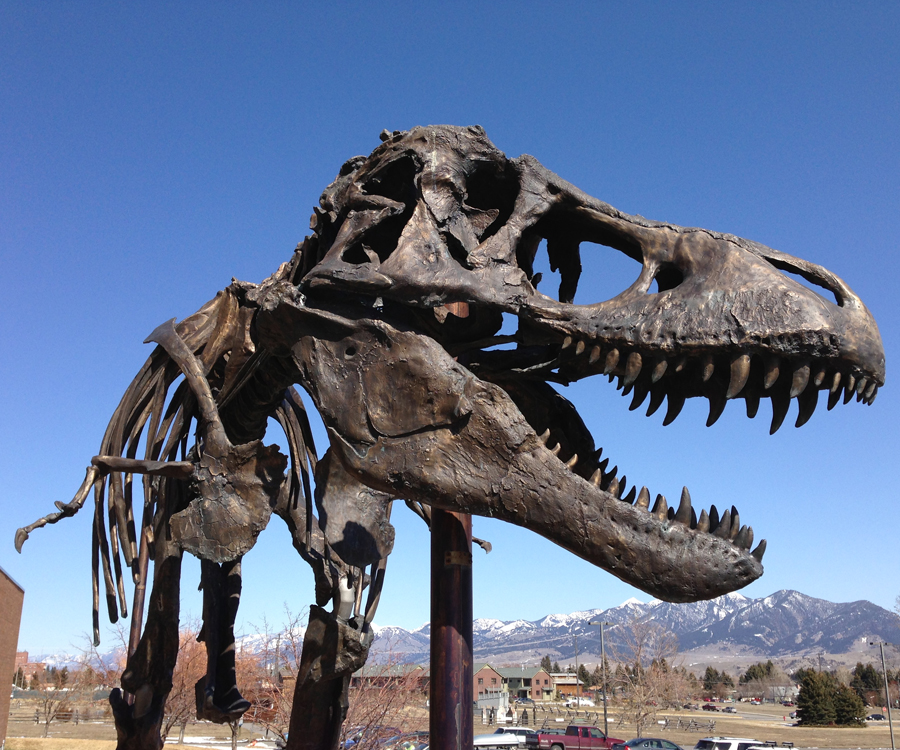To help mark the release of the Tyrannosaurus Rex stamps this week, here are five facts about the fearsome creatures.
1. The name Tyrannosaurus rex comes from Greek and Latin. “Tyrannosaurus” is Greek for “tyrant lizard,” and “rex” means “king” in Latin. So Tyrannosaurus rex was the “tyrant lizard king.” Dinosaurs were not actually lizards at all, but rather were a type of reptile.
2. Buffalo, SD, is the self-described “T. rex Capital of the World.” At least seven T. rex skeletons have been discovered near the small town. Notable specimens include “Stan,” one of the most complete skeletons in existence, and “Samson,” who was briefly put up for sale online in 2000. “The Nation’s T. rex,” which is depicted on two of the new stamps, was discovered in fossil form on federal land in Montana in 1988.
3. Adult T. rexes might’ve been covered in feathers. In 2012, a skeletal relative of the North American dinosaur was found in China. The specimen measured more than 25 feet and sported 6-inch feathers over most of its body. This discovery raised the possibility the Tyrannosaurus rex was itself covered in feathers.
4. The dinosaur’s arms weren’t so puny after all. What the T. rex’s arms lacked in length, they made up for in power. Paleontologists estimate the animal’s bicep alone could have curled more than 400 pounds.
5. The T. rex had the strongest bite of any land animal. It’s estimated the dinosaur had a bite force of approximately 8,000 pounds — twice the bite force of today’s largest living crocodiles.
